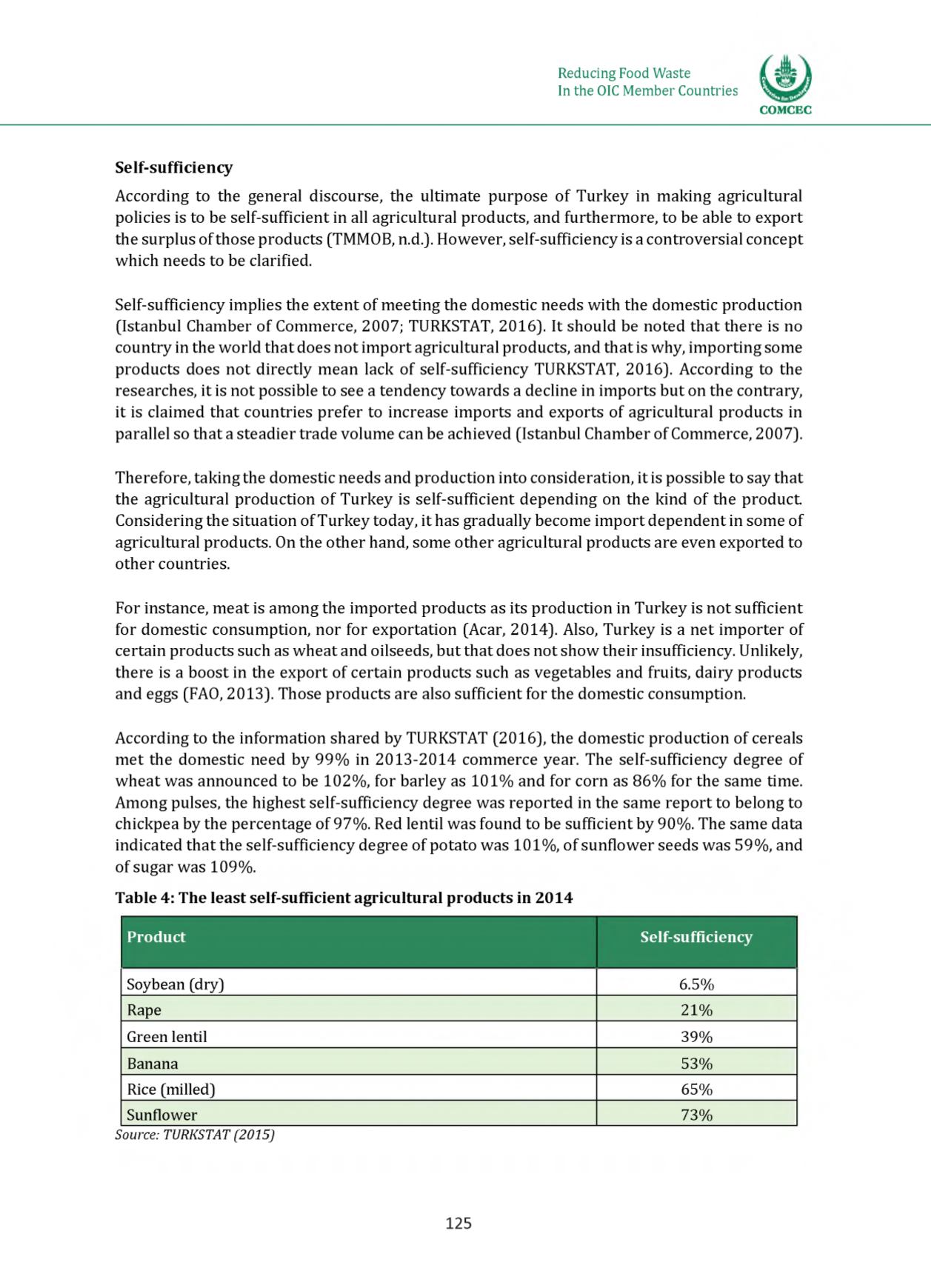

COMCEC
Reducing Food Waste
In the OIC Member Countries
Self-sufficiency
According to the general discourse, the ultimate purpose of Turkey in making agricultural
policies is to be self-sufficient in all agricultural products, and furthermore, to be able to export
the surplus of those products (TMMOB, n.d.). However, self-sufficiency is a controversial concept
which needs to be clarified.
Self-sufficiency implies the extent of meeting the domestic needs with the domestic production
(Istanbul Chamber of Commerce, 2007; TURKSTAT, 2016). It should be noted that there is no
country in the world that does not import agricultural products, and that is why, importing some
products does not directly mean lack of self-sufficiency TURKSTAT, 2016). According to the
researches, it is not possible to see a tendency towards a decline in imports but on the contrary,
it is claimed that countries prefer to increase imports and exports of agricultural products in
parallel so that a steadier trade volume can be achieved (Istanbul Chamber of Commerce, 2007).
Therefore, taking the domestic needs and production into consideration, it is possible to say that
the agricultural production of Turkey is self-sufficient depending on the kind of the product.
Considering the situation of Turkey today, it has gradually become import dependent in some of
agricultural products. On the other hand, some other agricultural products are even exported to
other countries.
For instance, meat is among the imported products as its production in Turkey is not sufficient
for domestic consumption, nor for exportation (Acar, 2014). Also, Turkey is a net importer of
certain products such as wheat and oilseeds, but that does not show their insufficiency. Unlikely,
there is a boost in the export of certain products such as vegetables and fruits, dairy products
and eggs (FAO, 2013). Those products are also sufficient for the domestic consumption.
According to the information shared by TURKSTAT (2016), the domestic production of cereals
met the domestic need by 99% in 2013-2014 commerce year. The self-sufficiency degree of
wheat was announced to be 102%, for barley as 101% and for corn as 86% for the same time.
Among pulses, the highest self-sufficiency degree was reported in the same report to belong to
chickpea by the percentage of 97%. Red lentil was found to be sufficient by 90%. The same data
indicated that the self-sufficiency degree of potato was 101%, of sunflower seeds was 59%, and
of sugar was 109%.
Table 4: The least self-sufficient agricultural products in 2014
Product
Self-sufficiency
Soybean (dry)
6.5%
Rape
21%
Green lentil
39%
Banana
53%
Rice (milled)
65%
Sunflower
73%
Source: TURKSTAT (2015)
125
















